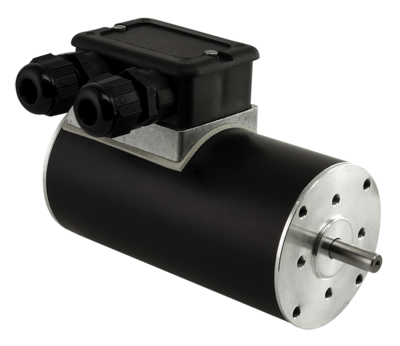Products
Precision on the move
The range of products of the GEFEG-NECKAR Antriebssysteme GmbH includes driving solutions for virtually all driving tasks up to 750 watts. The requirements of almost all lines of business are fulfilled. The customized interpretation and adaptation of the systems is carried out by experienced engineers with extensive application of industry-specific know-how.
Electrical motor designs
In electrical drive engineering, there are a number of motor types which fall into the small motor category. Gefeg-Neckar manufactures only internal-rotor motors with a cylindrical rotor.
The following designs refer to this type with a performance of up to 750 watt.
Field commutation
The basic characteristics of electrical motors depend on the method used to apply voltage to the windings. A distinction is made between self-commutated (positional and field commutated) and externally commutated (power and frequency commutated) motors. DC motors, in which the “self-adjusted” cyclic switching of the winding circuits in the rotor occurs using the mechanical (or electronic) commutator, belong to the first group. In external-guided motors (i.e. asynchronous motors), the circuits must be switched by the supply line or the control electronic.
Power supply
The type of current required by the motor determines the motor design with its specific pros and cons. The first general classification distinguishes between direct current (DC) motors and alternating current (AC) motors. The latter is then classified according to its number of phases. Depending on the connection to the power supply, AC motors are also known as single and triple phase motors.
DC Motors
DC motors differ in basic design depending on the type of commutation used. During mechanical commutation (abbreviated DC), the current in the rotor (armature) is reversed using a system made up of a commutator and carbon brushes. During electronic commutation (brushless, abbreviated BL-DC), this process is carried out by an electronic system and a rotor position encoder. The windings in the stator are connected either using a block-wave current method (square or trapezoid signals) or a sinusoid current method.
If the stator field is electrically stimulated, the corresponding commutator windings can be connected to the rotor winding parallel (shunt-wound motor), in series (series-wound motor), or in a combination from both (compound-wound motor). Other possibilities are to feed the field winding with its own power supply (separately stimulated motor), or to use permanent magnets instead of an electrically stimulated field (permanent-magnet motor abbreviated PM-DC motor).
AC Motor
AC asynchronous motors have a load-dependant speed, whereas AC synchronous motors are characterized by a frequency-locked speed. Gefeg-Neckar manufactured asynchronous machines are further classified according to their number of phases (single or three-phase) and number of poles (2-pole, 4-pole). Single-phase asynchronous motors need a capacitor in order to operate (capacitor motor).
AC-DC Motor
In design, the AC-DC motor is actually a direct-current series-wound motor which may (also) be operated using alternating current. It is also classified as an AC commutator motor.





